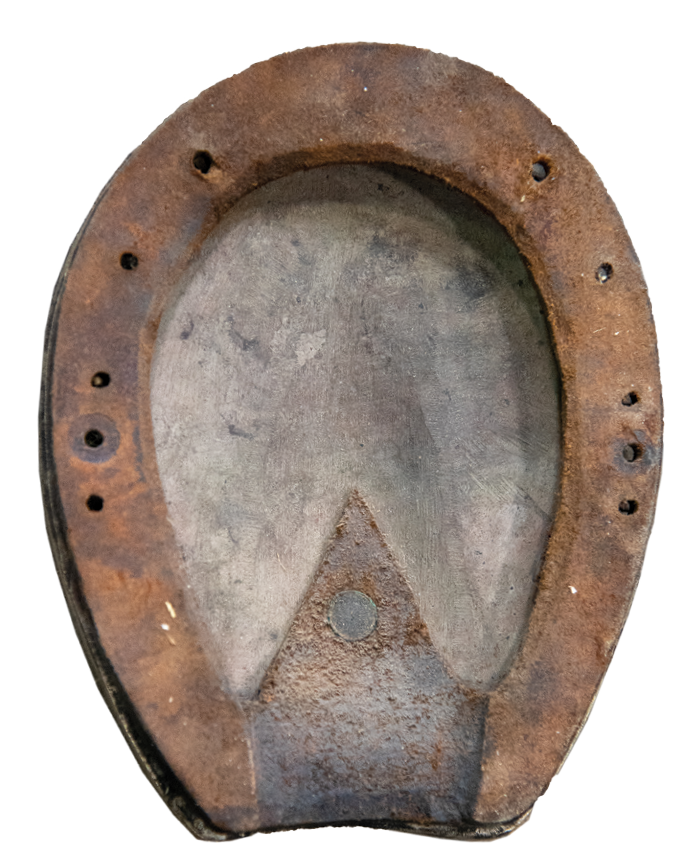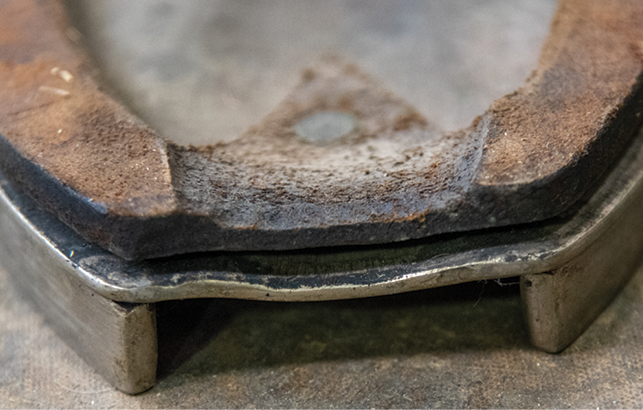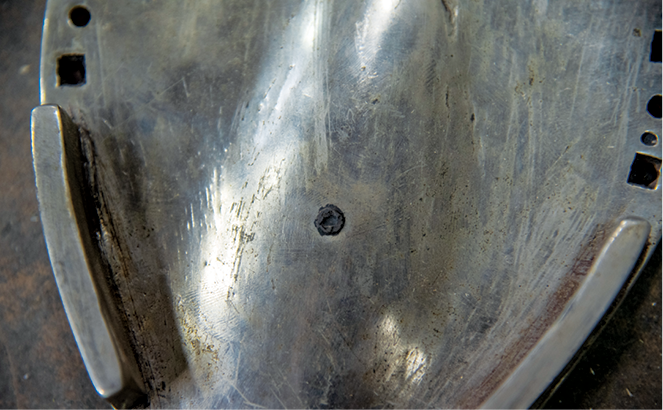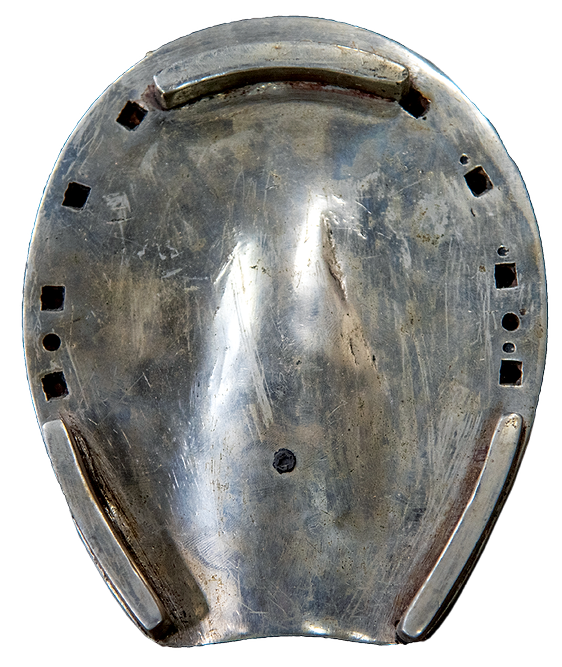Answer: Sole Protection
Working horses played critical roles in everyday life before the motorized carriage drove them to pasture. Like a truck that breaks down today, a horse that couldn’t do its job was a liability. While businesses might go to the junkyard to find a part to get the truck back on the road, farriers forged applications that would help the horse so it could return to work.

“These horses were only used at a walk,” explains Steve Kraus, senior lecturer of Large Animal Surgery and head of Farrier Services at Cornell University’s College of Veterinary Medicine. “When you look at the hills in Ithaca, N.Y., you needed horses that were safe and steady because they were bringing milk, ice, vegetables and whatever else, up and down these hills into the neighborhoods every day. They would do extraordinary things to keep these horses comfortable and going, just like the old mechanic who goes to the junkyard and says, ‘This part comes from a different year or model, but we can adapt it.’”
Henry Asmus, Cornell University’s first professor of horseshoeing, did a lot of adapting. This shoe was forged for horses with a weak wall or drop sole.


“The shoe is made from boiler-plate steel,” according to Asmus’ “Horseshoes of Interest to Veterinarians,” which was written for a New York state report in 1917-18. “The frog is beveled. In case the frog is very high, use a rim of leather just under the bearing surface of the shoe and pack with tar and oakum.”
The shoe, which is part of the Cornell University Farrier Program collection, features a toe grab and heel calks.
“You have to raise the horse off the ground to keep it off the frog,” Kraus says. “It has a 1/8-inch plate that’s tapered, punched nicely with rivet holes for the pad. It’s a pretty clever shoe.”
Source
Steve Kraus, Cornell University; Henry Asmus, Report of the New York State Veterinary College at Cornell University for the Year 1917-18.








Post a comment
Report Abusive Comment